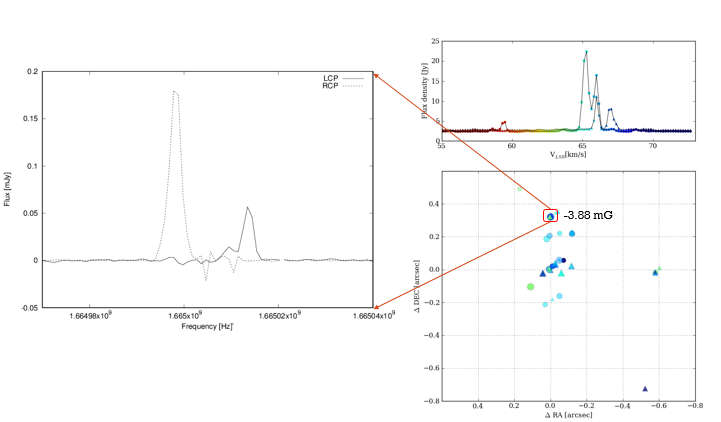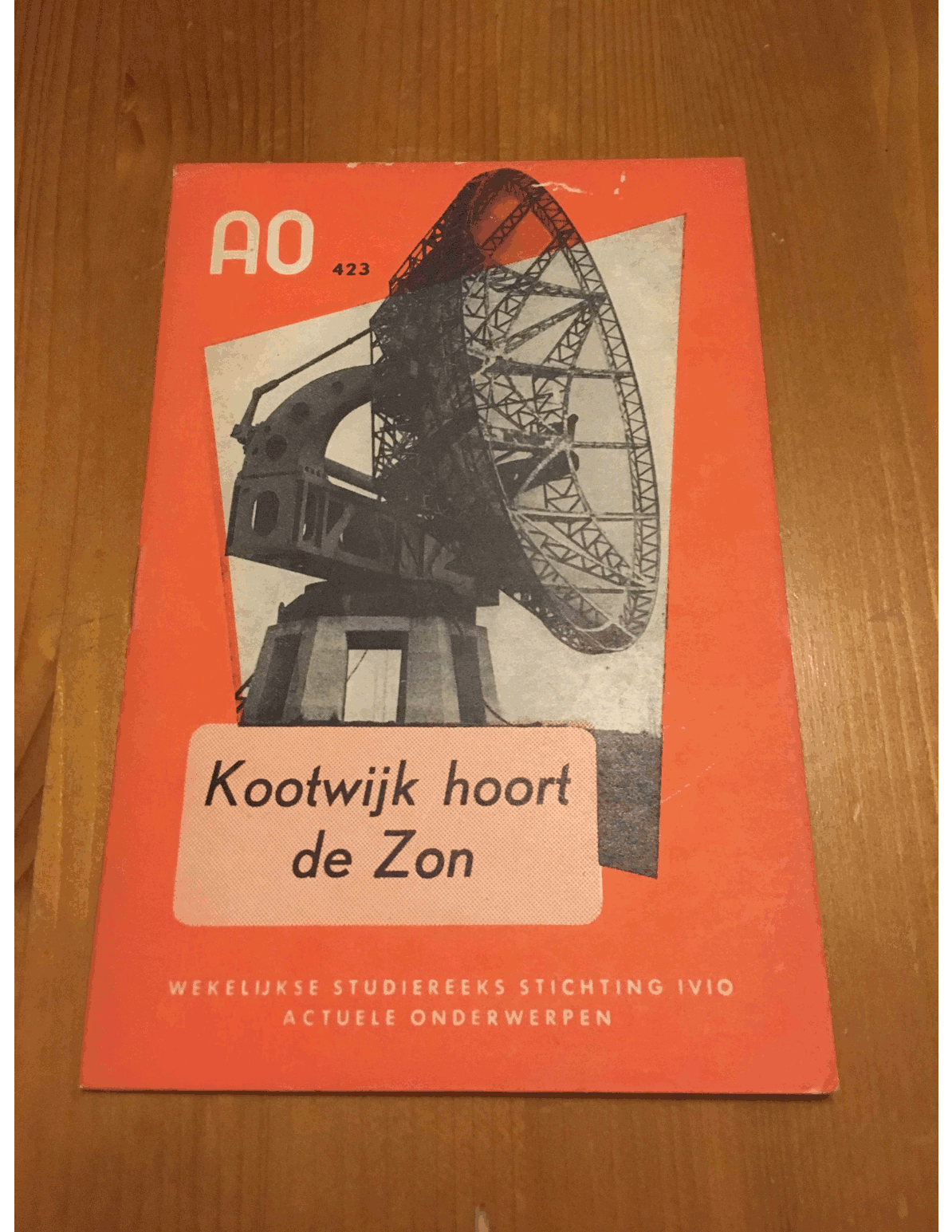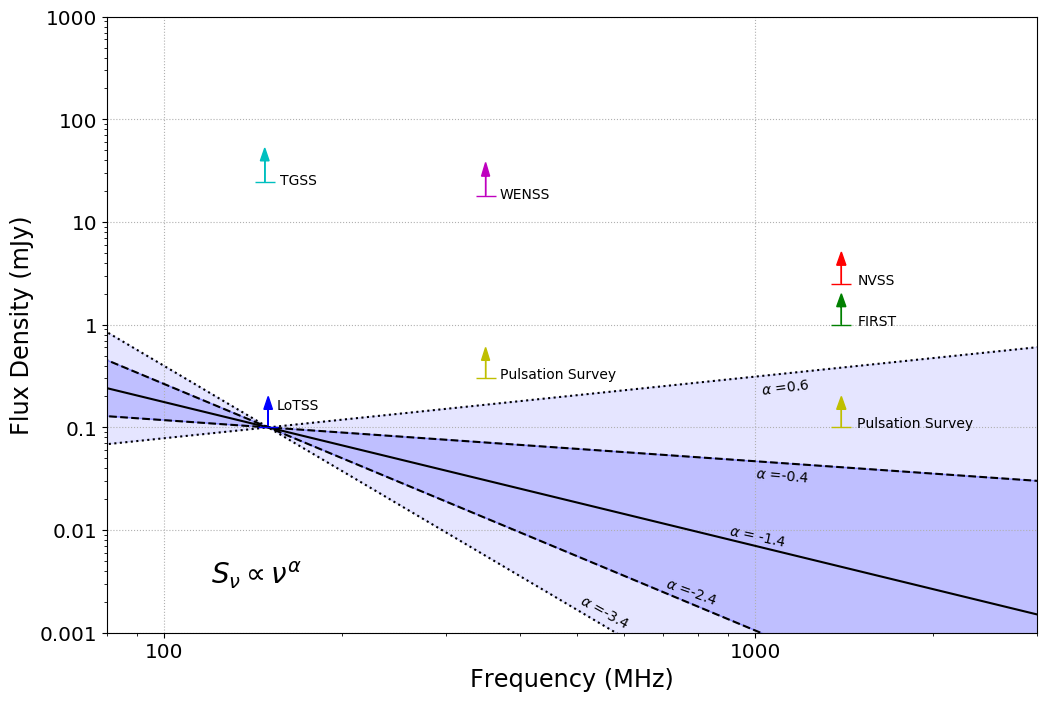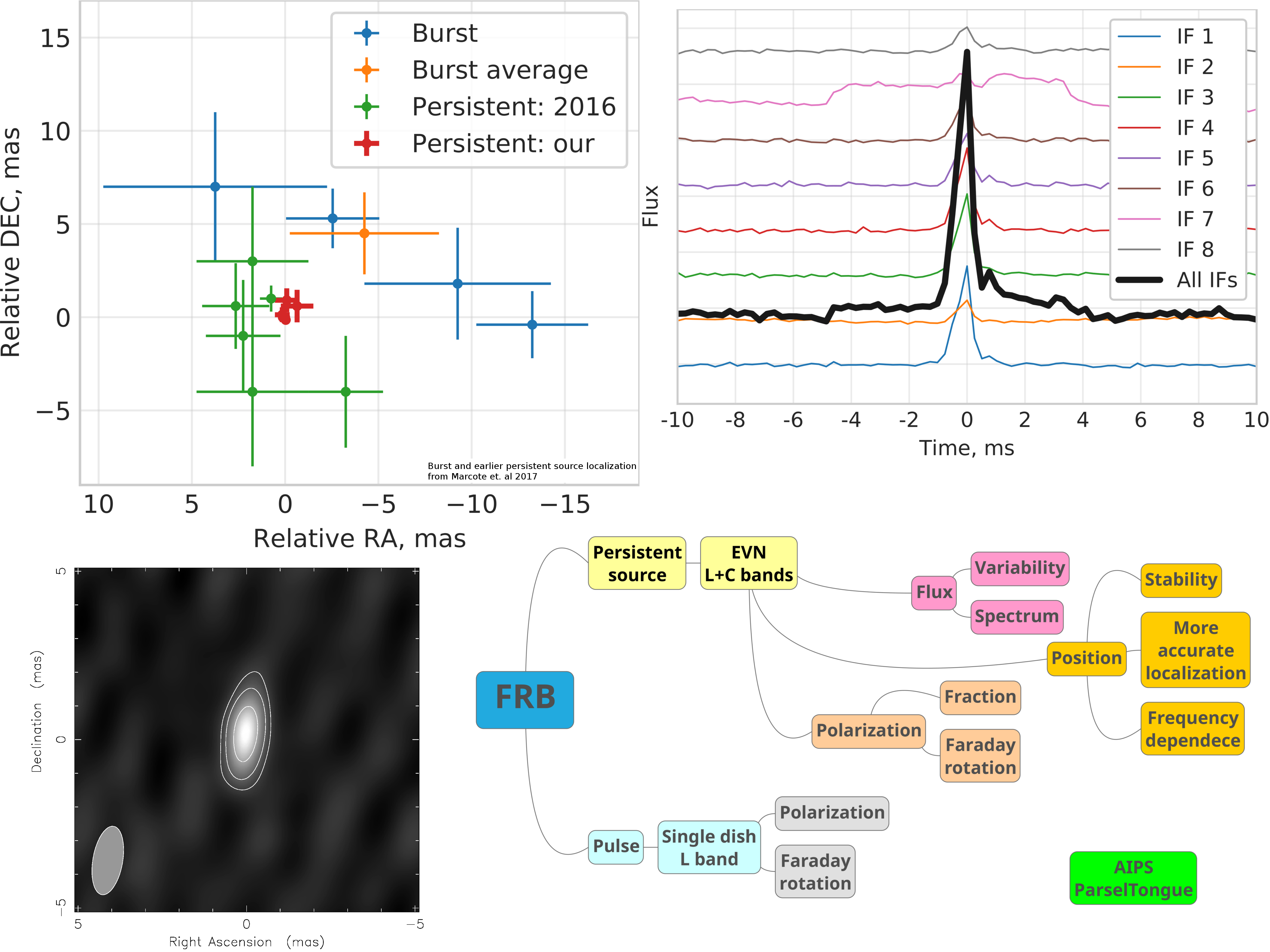 © ASTRON
© ASTRON
Summer break
Summer Student Project: Zeeman splitting in OH EGOs

Evidence of life in the ALTA team
 © ASTRON
© ASTRON
ASTRON in Noord-Brabant?
 © Koninklijke Bibliotheek (Delpher), ProfielActueel
© Koninklijke Bibliotheek (Delpher), ProfielActueel
The search for a place to build the radio telescope was not easy. It should be far away from existing and planned highways, industrial areas and other possible sources of interference. One of the possible places was a site south of Eindhoven in the province of Noord-Brabant. The possible site in Noord-Brabant was mentioned in the booklet "Kootwijk hoort de Zon" (Kootwijk hears the sun) published in 1952. This booklet is part of the AO-series. In this series two other booklets about radio astronomy were published. The first one is "Radiostralen uit de sterrenwereld" (Radio rays from the world of stars) written by J. J. Raimond (the father of former ASTRON collegue Ernst Raimond) in 1946. The other one is "Hier... Radio-Melkweg!" (Here... Radio-Milky Way) published in 1956 just before the opening of the Dwingeloo radio telescope (see also this daily image).
Another mention of the possible site in Noord-Brabant was made by the newspaper Algemeen Dagblad on the 27th of March 1953. In that article the radio observatory was caled a Mily Way monitoring station ("Melkweg-luisterpost"). Later in 1953 Dwingeloo was chosen as the definite site for the new radio telescope.
One can speculate what the consequences would be if ASTRON was situated near the region of Eindhoven with a lot of high tech companies. At least it would mean less travelling for the current chairman of CAMRAS.
How to become the Coolest Guy in the Building
 © Henk Mulder
© Henk Mulder
Finding Pulsars in the LOFAR Imaging Survey
 © Amy Tuson
© Amy Tuson
LoTSS is an ongoing, deep, interferometric imaging survey of the Northern sky at a central frequency of 144 MHz. The survey resolution of 5" and sensitivity of 100uJy per beam will make it the deepest radio survey to date. Due to the fact pulsars are steep spectrum radio sources, with a mean spectral index of approximately -1.4+-1.0 for the known pulsar distribution, we have the unique opportunity to find pulsars missed by standard all-sky pulsation surveys. The figure above shows imaging and pulsation survey sensitivity limits and the typical range of pulsar spectral indices.
Working with the LoTSS catalog of 320,000 sources, three pulsar properties can make it possible to distinguish them from other radio sources. Firstly, pulsar radio emission has a relatively high fraction of polarised flux. By searching through the preliminary catalog of 91 polarised LoTSS sources, no convincing pulsar candidates were found. Secondly is that pulsars have steep radio spectra. By computing spectral indices for LoTSS sources cross-matched to existing radio catalogs, such as WENSS, FIRST and NVSS, we found five pulsar candidates with spectral indices less than -1.5. Finally, scintillation causes variation of pulsar intensity as a function of both time and frequency. LoTSS sources were matched to sources in the TGSS catalog and we looked for those which showed a variation in total flux density. One source was measured as 6.9 times brighter in TGSS than LoTSS and this is a possible scintillating pulsar.
We have been granted time with LOFAR to follow-up the six sources of interest and the search for pulsations started last week.
Twinkle, Twinkle, little Quasar - Observing the Solar Wind with LOFAR
 © David McKenna
© David McKenna
In this project we took observations of 3C48 and 3C147 with simultaneous interferometric imaging using the Dutch array (at sub 10th of a second, a first for LOFAR), tied-array beams using the full core, with a ring of off-source reference beams, and "fly's eye" observations using the international stations on various dates during the spring. The imaging data were initially processed using the method outlined by Morgan et al. (2017) for extracting scintillation indices with the MWA wide-field images, and used as a reference baseline to compare approaches for implementing similar methodologies to extract scintillation indices from the beam-formed data sets. Both data sets were then used to implement a power spectrum method introduced by Manoharan (1993), where the area under the spectrum is used to assess the amount of scintillation, a method typically applied to single station time series data but now also applicable to the fast imaging we undertook with LOFAR. We obtained consistent results between the imaging and beam-formed data, demonstrating both that reliable scintillation indices can be calculated from LOFAR data, and that the faster processing and less data-intensive beam-formed data are sufficient for this. The technique was applied also to 3C147 LOFAR data from September 2017 to identify and observe the passage of the fastest CME of the current solar cycle!
The video is a WSClean image cube from an observation of 3C48 on the 18th of April, at a sampling rate of 12.04Hz and an excessively-detailed pixel resolution, showing the source scintillating due to the solar wind.
Summer Saturn
 © Rik ter Horst
© Rik ter Horst
This image is the result of 'Lucky Imaging' and is a Multi-stack of 5%, 15% and 30% of the best frames out of a 20000 frame AVI. While processing, I tried to avoid artefacts in order to keep the result as realistic as possible. The used camera was an ASI178MC (color).
Waiting for Wetter Times

Now, during this very boring heat-wave, most of the nearby lakes and ponds on the Dwingelderveld are parched, cracked and dry. But our skating pond is still as full of water as ever, begging the question how deep it actually is.
While you are pondering the secrets of this pond, you may click on the links and enjoy the refreshing sight of snow and ice. Lovely winter will be upon us before you know, and we might just be favoured with some passable ice.
Space Studies Programme visited Dwingeloo
 © ASTRON
© ASTRON
The SSP is a nine-week graduate top-level professional development program conducted by the International Space University (ISU). The curriculum covers the principal space related fields, both non-technical and technical and ranges from policy and law, business and management and humanities to life sciences, engineering, physical sciences and space applications. SSP participants are high potential scientists and engineers in the field of space in their early career from 35 different countries.
This year, the SSP takes place from 25 June to 24 August in the Netherlands, hosted by the Netherlands Space Office (NSO), in close collaboration with Delft University of Technology, Leiden University and the European Space Research and Technology Centre (ESA-ESTEC) in Noordwijk. The program is packed with a wide variety of activities including lectures by renowned experts, hands-on activities and projects, team work assignments, and professional visits to industry and academia. ASTRON, JIVE and NOVA are sponsors of the SSP and collectively organized a visit to Dwingeloo on July 30th and August 5th.
Because of the summer holidays it has been quite a challenge for the SSP Local Organising Committee to set up such a program, but when leaving Dwingeloo/Exloo the SSP visitors said that they were very grateful for the interesting program.
Total Lunar Eclipse 2018
 © Zsolt Paragi
© Zsolt Paragi
A Summer Nebula
 © astropix.nl
© astropix.nl
This image of planetary nebula Messier 27 (aka the Dumbbell Nebula) is a simple RGB combination of four, 600s integrations for each filter with a 40cm telescope.
11 years ago I made an image of this nebula with a much smaller telescope.
http://www.astron.nl/dailyimage/index.html?main.php?date=20070620
The colour rendition of the new version is a bit more accurate and it shows a lot more detail.
The full size image can be viewed here: https://astrobin.com/full/355971/C/
Today's Colloquium
 © Sergei Gulyaev
© Sergei Gulyaev
A Dutch Summer
 © Cees Bassa, Joe Callingham, Gemma Janssen, David McKenna, Golam Shaifullah, Amy Tuson & Pietro Zucca
© Cees Bassa, Joe Callingham, Gemma Janssen, David McKenna, Golam Shaifullah, Amy Tuson & Pietro Zucca
A special thanks goes to our supervisors - Cees Bassa, Ross Burns, Richard Fallows, Katharina Immer, Yogesh Maan, Zsolt Paragi, Tim Shimwell and Pietro Zucca - and everybody else who has helped us along the way. Your encouragement and support have been invaluable. We'd also like to mention Gemma Janssen and Golam Shaifullah, among many others, for making our summer so much fun! The collage above shows just some of the many things we have been up to. Starting from top left and moving across...
- We visited the ESA's European Space Research and Technology Centre for a tour and a selection of interesting lectures. The capsule we are stood with has been in orbit around the Earth!
- The Oogstdag is a traditional farming festival held in Lhee and, as we quickly found out, there is lots of tasty food.
- We 'walked' to an island through mud at low tide. Needless to say, our shoes will never look the same again.
- Some of us visited Cologne, Germany for a weekend. We climbed to the top of the cathedral in the background and the view was incredible!
- We experienced an unconventional Dutch summer of continuous sunshine, so we were lucky enough to see many beautiful sunsets across Dwingelderveld National Park.
- A boat trip around Giethoorn in "the world's slowest boat" (Pietro Zucca, 2018).
- ASTRON students sat on the base of the Dwingeloo Radio Telescope.
- The many clear nights during our stay made for some excellent stargazing. Mars is above the two silhouettes.
- We were taken to explore the Westerbork Synthesis Radio Telescope and LOFAR Superterp.
- Cycled to the Hunebedden near Havelte; despite the fact this looks like a child's playground, it is a Neolithic burial chamber!
- Some of us visited Brussels, Belgium for a weekend, enjoying foreign delicacies known as 'fries' and 'waffles'.
- We placed our flags on the summer student world map.
Dank u wel en tot ziens!
Amy, Iuliana, David, Anshu, Daysi and Alexander
ARTAMIS (All-Round Telescope Array Monitoring and Information System)
 © Henk Mulder
© Henk Mulder
Since around September Henk Mulder and Arthur Coolen have been working hard on designing, building, coding and testing our new Monitoring System for monitoring all of Westerbork. The All-Round Telescope Array Monitoring and Information System (ARTAMIS) monitors all the WSRT systems (Dish control, Weather Sensors, Radio Astron, Galileo, (e)VLBI, ARTS, Apertif..) giving us the capability to see everything we need in one monitoring system. Load data points in graphs, look back in time to spot anomalies, find failing fans, firmware problems, failing dishes.. you name it.
We have recently had our first feedback session were we ask for input from the people building the hardware, enthusiastic astronomers, software engineers, field engineers and other future users to see what needs to be monitored, what can be monitored and who needs what data points to be displayed in what way. And of course show everyone what fancy features we are working on for the future. We also sent out our first WinCC OA newsletter which shows some of the new features we just released, where to find them, and how they can improve your day to day work straight away (its been a productive few months).
The monitoring is developed and designed in-house and is being updated constantly. Like LOFAR has the Navigator thats become a piece of monitoring software that is invaluable for making sure we get the best out of our systems and get alerted to critical system problems before they happen. The Westerbork monitoring system has already given us new insights on how the Apertif hardware is performing and what needs extra attention. Building a SCADA system from scratch has also been a great way for us to really see what is now possible with WinCC OA, and this will also give us a head start for future projects like LOFAR 2.0.
So to the developers, users and WinCC OA friends many thanks, and continue giving us your feedback, only then you will get the product that is able to make your day to day life easier.
Scintillation based search for off-pulse emission from pulsars
 © Iuliana Nitu
© Iuliana Nitu
On the basis of this, we used a new technique ( Ravi and Deshpande 2018 ) to estimate off-pulse emission from pulsars.
A major part of this project was the implementation of this technique in Python. Then, we analysed various observations. The image here shows the main plots of the analysis of PSR J1713+0747 data taken with the Green Bank Telescope, as part of the 24-hour campaign (with thanks to Joeri van Leeuwen and Timothy Dolch for providing these data). On the right, the dynamic spectrum of the main pulse region shows bright regions (or scintles) due to interstellar scintillation. On the top-left, the 2D auto-correlation of the main pulse dynamic spectrum is shown, with the corresponding 1D cuts at zero frequency and time lag respectively. The widths of the Gaussian distributions are representative of the dimensions of the scintles. On the bottom-left, the cross-correlation between the main pulse and the off-pulse dynamic spectra is shown, with the corresponding cuts. Our analysis places a limit on the off-pulse emission as (0.0 +/- 0.4)% of the main pulse emission.
We hope that in the near future, the software developed this summer will lead to a systematic search of off-pulse emission in many pulsars, and eventually help improve our understanding of pulsar emission.
A repeating fast radio burst and its persistent radio counterpart
 © Alexander Plavin
© Alexander Plavin
The main goal of this summer project was to process the three epochs of EVN data at two frequencies to establish the properties of the persistent radio source. We studied its variability and found that the flux density is constant at the 10% level. The location is very stable as well at the level of 0.1 mas. The position does not depend on observing frequency, and we obtain the most accurate localization to date. We get an upper limit of 25% on fractional polarization for the persistent source at 5 GHz, which is much lower than for individual burst, that are almost 100% polarized at the same frequency. This proves beyond doubt that the persistent radio emission is not due to a large number of very weak repeating pulses.
In addition the project included the study of the brightest pulse detected for this source at 1.6 GHz. We got preliminary results on its polarization, which is less than 30% in contrast to highly polarized C-band pulses. The detected rotation measure is the highest ever reported for this source.
The image above shows the following (left to right, top to bottom):
- Comparison of localization accuracy achieved in this project in comparison to previous observations.
- The strongest pulse profile at 1.6 GHz.
- EVN image of the persistent source.
- Mindmap of this project including properties we studied and instruments used.
A better radio view of M81 and M82
 © (c) Erwin de Blok
© (c) Erwin de Blok
Those old observations were made some 25 years ago, and cover only a small part of the volume of the triplet. In fact, recent single-dish observations show that there is twice as much HI present in the group than previously observed with the VLA.
We therefore decided to revisit this group, again using the VLA whose capabilities have improved enormously over the past decades. We covered a 3 x 3 degree area surrounding M81 with 105 pointings, increasing the survey area by almost a factor of ten. These new observations also increased the spatial and velocity resolution significantly, so that these new observations can now resolve individual HI clouds around these galaxies.
The left-hand image shows our new high-resolution HI mosaic in blue, superimposed on a Sloan Digital Sky Survey colour image. M81 is in the center, M82 toward the top, NGC 3077 is visible on the left, and dwarf galaxy NGC 2976 at the bottom-right. The spiral arms in M81 are clearly visible, as is the chaotic HI distribution around M82, and the offset HI near NGC 3077. Throughout the field, bright and faint HI streams and filaments are visible, connecting these galaxies. The right-hand image shows only the HI distribution. Here the complexity of the HI filaments and clouds is clearly visible.
These observations are described in a paper recently accepted for the Astronomical Journal by de Blok et al., also available at https://arxiv.org/abs/1808.02840 .
Parker Solar Probe makes a star of Richard Fallows
 © RTL Nieuws/Frank Nuijens
© RTL Nieuws/Frank Nuijens
The Communications team gets the most diverse questions. This particular one came from a journalist of RTL Nieuws, the national news broadcast. My answer was: "Probably not, but let me check and get back to you."
As it turns out, Richard Fallows has observing time on LOFAR to co-observe the solar activity as the Solar Probe orbits the Sun. RTL Nieuws thought this was an interesting alternative to a launch-watching party and interviewed Richard.
The news broadcast was watched by almost 750,000 people and can be viewed on https://www.rtlnieuws.nl/uitzendingen/rtl-nieuws-1930-uur-1791 (from 12:58).
Unfortunately the reporter didn't have the time to include Richard's quotes on his work with LOFAR in the report. As Richard is on holiday, I asked Pietro Zucca to explain what LOFAR will do:
The combination of in-situ spacecraft measurements and ground-based remote-sensing observations of coronal and heliospheric plasma parameters is extremely useful for space-weather studies. Ground-based observations can be used to infer a global picture of the inner heliosphere, providing the essential context into which in-situ measurements from spacecraft can be placed. Conversely, remote-sensing observations usually contain information from extended lines of sight, with some deconvolution and modelling necessary to build up a three-dimensional (3-D) picture. Precise spacecraft measurements, when calibrated, can provide ground truth to constrain these models.
Up until now, spacecraft have rarely travelled very close to the Sun. The launch over the next couple of years of two dedicated solar missions represents the first opportunity in 40 years to directly combine remote-sensing observations of the solar corona and inner heliosphere with in-situ measurements close-in to the Sun. The Parker Solar Probe (PSP) launched this August 2018, with Solar Orbiter currently scheduled not earlier than February 2020.
Shock signature in the Solar Corona with LOFAR
 © ASTRON
© ASTRON








